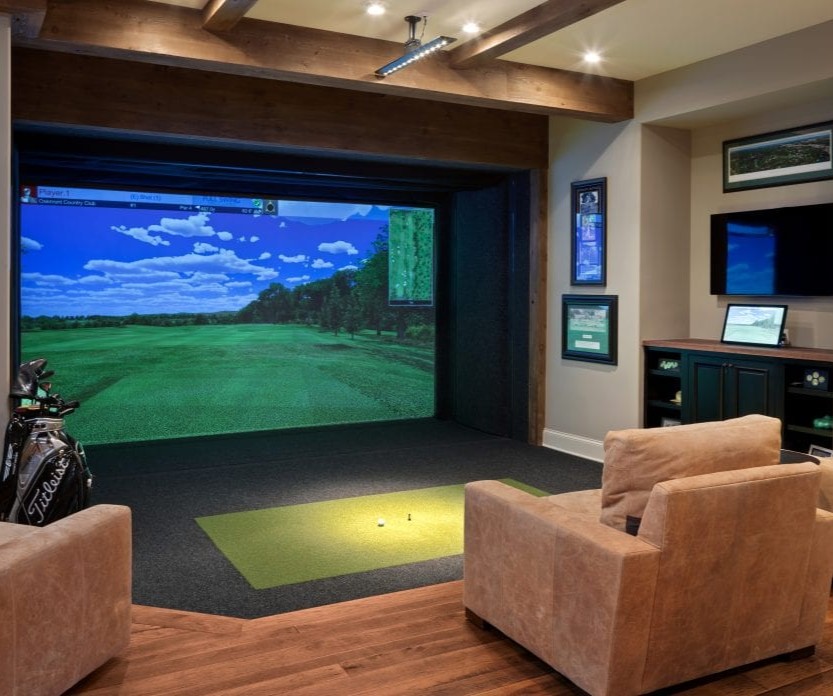
Simulator Basics
Computer
Your PC or laptop is just as important as the launch monitor. It needs a fast processor, a powerful graphics card, and enough RAM and storage to run golf simulation software without lag. If you’re investing in a simulator, don’t skimp on the computer—it needs to handle the software’s demands for smooth gameplay and accurate visuals.
Impact Screen and Built-In vs. Enclosure
The impact screen is where the ball meets your setup. A high-quality screen ensures clear visuals and durability. Along with the screen, your surrounding setup protects your space from wayward shots and provides the setup’s aesthetic. A well-constructed enclosure prevents damage while enhancing the look of your simulator.
Hitting Mat
The hitting mat is the most important part of the setup for comfort and durability. Look for a mat with realistic turf density and good feedback. Avoid mats that are too soft or too firm, as they can lead to poor swing mechanics or discomfort during long sessions. A quality mat mimics the feel of real turf, offering a more authentic experience.
Software
Simulator software is what ties everything together. It determines what courses you can play, how accurate the ball physics are, and what kind of practice features are available. Choose software that works well with your launch monitor and aligns with your goals—whether it’s detailed swing analysis or casual play on hundreds of courses.
Projector
A high-quality projector is crucial for the best visual experience. Look for a projector with at least 3,000 lumens of brightness, especially if you’re in a room with ambient light. A short-throw projector is ideal to avoid shadows, and higher resolution (1080p or 4K) will improve image clarity.
Accessories and Add-ons
While not mandatory, accessories can elevate your experience. Consider adding lighting for better visibility and swing cameras to analyze your form. Button boxes, audio systems, and second or third monitors can make the gameplay more immersive and interactive. Webcams for online play also provide a great way to compete with friends virtually.
Professional Installation
Lastly, installation is where many people go wrong. Setting up a simulator isn’t just plugging in a few devices—it requires precise measurements, proper mounting, and calibration for everything to function correctly. If you’re unsure, professional help ensures everything works right from the start and avoids the common pitfalls of DIY setups.
By ensuring each component works together seamlessly, you’ll create a simulator that not only meets but exceeds your expectations. With the right space, quality tech, and proper setup, you’ll be ready to hit the links, no matter the weather.
